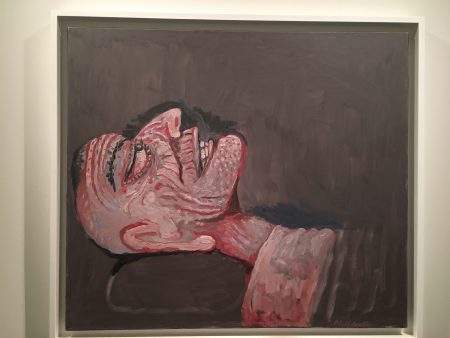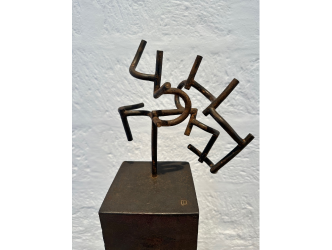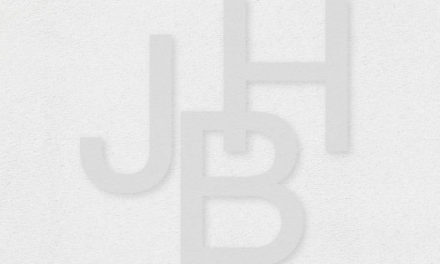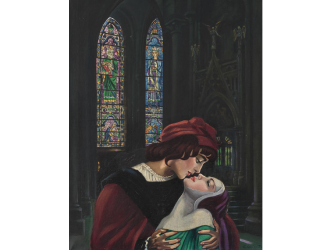Guston, an American painter with a distinctive verve, is known for having moved from figuration to abstraction, then back to figuration again. Why?
Having visited the exhibition in Venice, one might be tempted to respond: this was not really the main subject of his work, even if public opinion has always attached itself to the question.
The exhibition ‘Philip Guston and the Poets’ is remarkable for helping us to understand the very essence of his work above and beyond classical questions of representation and chronology.
The curator, Kosme de Baranao, is a Spanish art historian and a specialist in the Italian Renaissance.
In other words, he has an original take.
He explains: ‘Guston was one of these painters whose themes changed, but not his style.
Look at the years 1954-55, the way he uses the brush. He has exactly the same style as 22 years later.
We’ve hung these three paintings together which seem like a triptych.’
The curator then quotes T.S. Eliot (1819-1965): ‘My end is my beginning. My beginning is my end’. And adds: ‘He was so recognised in his abstract period, so it must have taken tremendous courage to go back to figuration.’
The literary connections in the exhibition are not literal but instead, according to the curator, illustrative of the feelings of the painter who spent a lot of time surrounded by poets.
His daughter Musa Mayer who wrote a captivating book about her father (1) speaks about his relationship to poetry:
In a career with its theoretical gear shifts, Guston created an instantly recognisable universe.
His very frequent use of a reddish claret colour is one of its characteristics.
Kosme de Baranao emphasises that like illustrious painters El Greco and Titian ‘he puts red at the centre of his painting.’ For his daughter Musa this crimson colour is an expression of the flesh.
As for his thick brushstrokes, he was inspired by American comics.
His rebus-like figurative iconography – head, hand, clock, car – is highly enigmatic.
Guston blends what we might call ‘high’ and ‘low’ culture: ancient art and popular art.
In 1977 he declared to students at Harvard: ‘To know and yet how not to know is the greatest puzzle of all.
We are primitives in spite of our knowing. So much preparation for a few moments of innocence of desperate play.
To learn how to unlearn.’
This exhibition, built on intellectual foundations, succeeds miraculously in creating a pure visual pleasure.
Until 3 September. www.gallerieaccademia.org.
(1) Night Studio. A memoir of Philip Guston. Sieveking Verlag, Hauser& Wirth.
Support independent news on art.
Your contribution : Make a monthly commitment to support JB Reports or a one off contribution as and when you feel like it. Choose the option that suits you best.
Need to cancel a recurring donation? Please go here.
The donation is considered to be a subscription for a fee set by the donor and for a duration also set by the donor.











